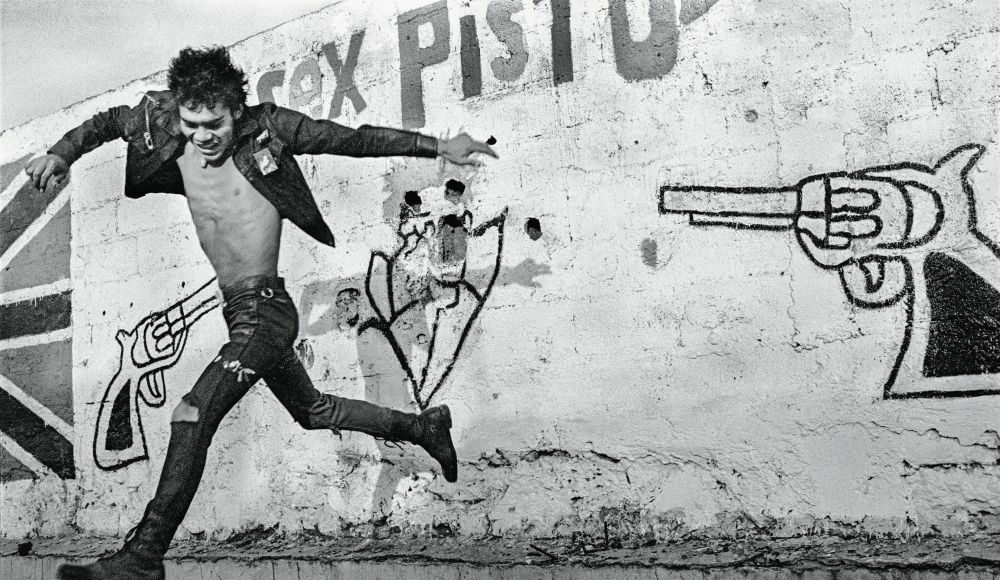Bloody and beautiful, brutally realistic and dancing on the threshold of the surreal, a new exhibition of Latin American photographs at the Cantor Arts Center examines the political and the private with propaganda and meditations on personal identity.
Stanford’s Cantor Arts Center is hosting the Judy and Sidney Zuber collection of Latin American photographs in the Ruth Levison Halperin gallery. The small private collection of 76 photographs was promised as an eventual gift to the Cantor by the husband and wife art collectors, and for now the exhibition features 34 black and white photographs from 10 countries.
“This exhibition is a sort of first celebration of that gift and will include 34 of those artworks, it’s very representative of the full collection,” co-curator Maggie Dethloff says. “Much of the collection showcases strengths in figurative photography, social documentary, studio portraiture, street views, and performative works.”
Dethloff started working with the Cantor in the Fall of 2019 as a curatorial fellow, and is now the Assistant Curator of photography and new media.
The name of the exhibition comes from curatorial assistant and co-curator Jorge Sibaja, formerly a curatorial assistant at the Museum of Latin American Art in Long Beach. While setting up the exhibition, Sibaja had been listening to music reminiscent of his parents’ youth in 1950s Oaxaca. The song “Más Allá” from Mexican traditional trio Los Tres Diamantes came up in his playlist, the phrase “más allá” evoking meditations on the meaning of “beyond:” not only beyond here, but beyond time, beyond this plane of life, this understanding of existence.
“That just clicked also with a lot of content that is included in the exhibition, because there’s all these macro events that are happening and outside influences that deeply impact individual lives,” Sibaja says of the song and the name choice.
The song captures a hope and a romance that decontextualizes history and current events, conjuring the idea of a Latin America that is beyond its complicated history of indigenous cultures, colonization, revolution and industrialization.
The exhibition is geographically and culturally diverse and features photographs from both men and women photographers. Each photograph is a window into the tumult and change of 20th century Latin America, a century of turbulence, revolution, growth and personal struggle.
Manuel Álvarez Bravo’s “Striking Worker, Assassinated,” which shows a murdered sugar-mill laborer lying slain on the pavement in 1930s Mexico, and Raúl Corrales’ “La Caballeria,” a recreation of the expropriation of United Fruit Company plantations by Fidel Castro’s July 26 Movement, depict decolonial revolution and proletariat uprising in all their horror and glory.
Notably absent from the current exhibition are the photographs of Alex Webb and wife Rebecca Norris Webb, American photographers who regularly photograph scenes of desperation and conflict at the U.S./Mexico border. Though the Zuber collection holds several of the Webbs’ color photographs, these were purposefully excluded from the current exhibition in order to ensure the viewing of Latin America through a particularly Latin-American lens.
“Jorge and I decided not to include that work because we really wanted to focus on photographers who were actually from or lived in South and Central America,” Dethloff says.
“The more distance we have to things and the less knowledge that we have…the more distance that we can have from us and the world around us, and I think that that’s certainly part of that white gaze,” Sibaja says.
Some photos in the exhibition are journalistic in nature, others are posed studio portraits of revolutionary figures, or recreations of pivotal moments in communist and anti-colonial history.
Flor Garduño, Graciela Iturbide and Marta María Pérez Bravo turn their lenses to the matriarchal, the feminine and the eternal. Garduño’s self-portraits and meditations on the nude female form, often accompanied by fruit or flowers, lend a female gaze to concepts of sexuality and feminine identity.
Pérez Bravo, from Cuba, captures herself in stunning gelatin prints that deify and deconstruct her as a woman, using symbolism from Afro-Cuban religion.
Graciela Iturbide is known for interrogating Eurocentric gender norms and centering indigeneity in her photographs of the Zapotec people of Oaxaca and the muxe, or third gender, people of the Zapotec culture.
“Más Allá: Beyond Here” asserts that Latin America and its many cultures and contradictions are gloriously beyond any sense of neat, concrete definition.
Más Allá: Beyond Here
August 9 – January 28



